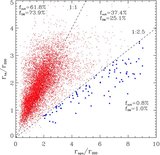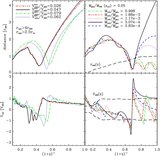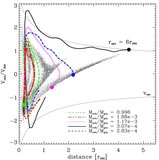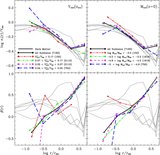Image Details
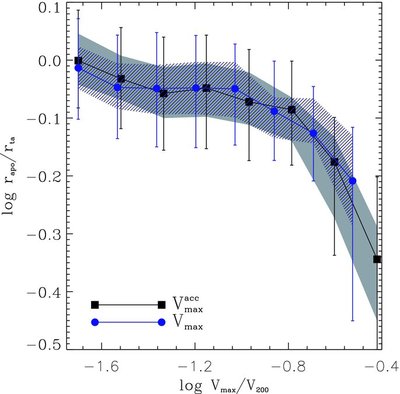
Caption: Figure 5.
Ratio of apocentric radius (estimated at z = 0) to turnaround distance as a function of the peak circular velocity, V max, of a subhalo. Two estimates of V max are used for each subhalo, one measured at accretion time and another at z = 0. Symbols correspond to the median of the distribution, shaded areas encompass 25% of the distribution around the median, and the extremes of the error bars correspond to the 25th and 75th percentiles. Note that only fairly massive associated subhalos are today on orbits substantially more bound than when they turned around. The median apocentric radius of low-mass subhalos is of order of the virial radius, indicating that about half of all associated subhalos spend a substantial fraction of their orbital period outside r 200. Note that the effect depends only weakly on V max below a certain threshold; this presumably indicates that, below a certain mass limit, subhalos behave like test particles in the potential of the main halo.
Copyright and Terms & Conditions
© 2009. The American Astronomical Society. All rights reserved.



